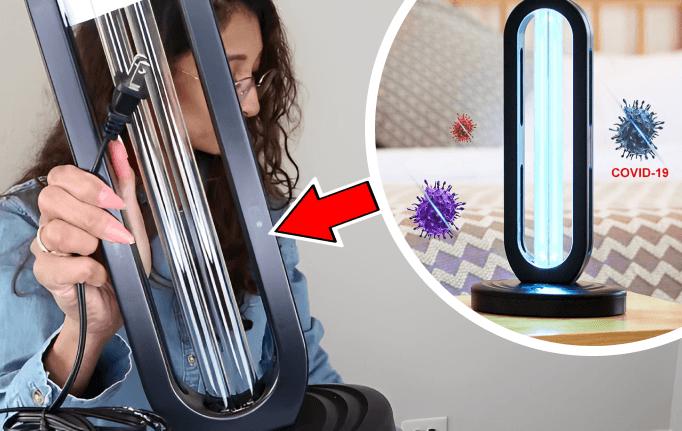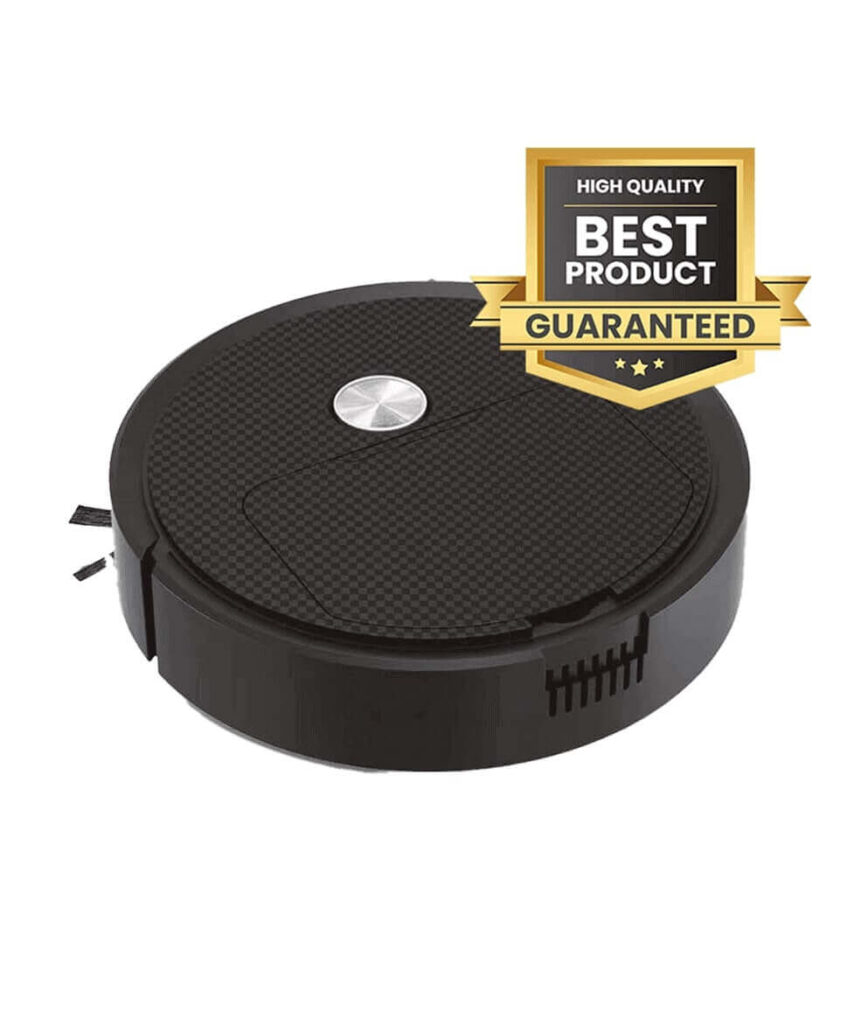Introduction:
SterilAir UV is a consumer-facing UV-C air and surface sterilization device designed to reduce airborne microbes and surface contamination using short-wave ultraviolet light. Proponents point to fast sanitizing cycles and chemical-free disinfection; critics caution about safety risks (direct UV exposure), variable real-world effectiveness, and the limits of UV for penetrating shaded areas or porous surfaces. If you want faster, chemical-free disinfection for small rooms, tools, or personal items and you follow safety guidance, a SterilAir UV device can be helpful — but it isn’t a replacement for cleaning, ventilation, or standard infection-control practices.
Click Here to Buy “SterilAir UV” – Limited Time Discount!
What is SterilAir UV?
SterilAir UV refers to a category of UV-C sterilization devices marketed for homes, offices, clinics, and commercial spaces. The brand name “SterilAir” is used for products that typically combine a UV-C lamp (often 254 nm or similar) with a housing and sometimes a small fan to pull air past the lamp.
Typical claims: rapid pathogen reduction on exposed surfaces and in the air, chemical-free operation, and portability. Depending on model, some are designed for tabletop sterilization of small objects (phones, keys), while larger units are for rooms and HVAC ducts.
How UV-C disinfection works?
UV light is part of the electromagnetic spectrum. UV-C (roughly 200–280 nm) carries enough energy to damage the nucleic acids (DNA/RNA) of bacteria, viruses, and fungi. When UV-C photons are absorbed by microbes, they create molecular lesions (like thymine dimers in DNA) that prevent replication and render the organism noninfectious.
Key points:
- Dose matters: Effectiveness = irradiance (power) × exposure time. Higher intensity or longer exposure increases kill rate.
- Wavelength matters: UV-C around 254 nm is historically used for germicidal lamps. Recently, “far-UV” (~222 nm) research suggests potential safety advantages but is different technology and more niche.
- Line of sight: UV disinfects surfaces that it directly illuminates. Shadows, crevices, and opaque materials block the light.
- Not instant for everything: Hardier spores and some thick biofilms need higher doses.
Common SterilAir UV product types and features:
SterilAir–style products you’ll find fall into a few groups:
- Personal/desk sterilizers: Small boxes to disinfect phones, masks, keys. Usually 5–15 minute cycles.
- Portable room units: Standalone lamps or tower devices. Some have motion sensors or timers to operate when rooms are empty.
- Air purifiers with UV-C: Combine HEPA filters + fan + a UV-C chamber to irradiate air as it circulates.
- Ceiling or duct UV installations: Fixed units for HVAC ducts or ceiling mounts for continuous air disinfection (commercial use).
Typical features:
- Timer settings and cycle lengths
- Motion or presence sensors (safety)
- Fan integration for air movement
- Removable trays for object sterilization
- Replaceable bulbs (specifying hours of effective life)
- Indicator lights or safety interlocks
Click Here to Buy “SterilAir UV” – Limited Time Discount!
Real-world effectiveness — what to expect:
Controlled lab tests show UV-C can inactivate a very broad range of microbes when dosage is adequate. In practical settings:
- Good for: Disinfecting exposed surfaces and air in small, well-managed tasks (e.g., phone in a sterilization box; air passing close to a strong UV source).
- Mixed results for rooms: A single lamp may reduce count of airborne microbes but levels depend heavily on room size, circulation patterns, and time.
- Not a cure-all: Dirt, grime, and organic material can shield pathogens. UV cannot “clean” — physical removal and cleaning still matter.
In short: expect meaningful reductions of exposed microbes, but don’t expect sterilization of every nook and cranny or long-lasting “sterile” environments unless paired with good ventilation and cleaning.
Safety: what you must know:
This is the most important section. UV-C is effective — but also hazardous to humans and animals if misused.
- Never look at a UV-C lamp: Direct exposure can injure eyes (photokeratitis) and skin (sunburn-like damage).
- Avoid direct skin exposure: Short bursts can cause painful irritation; repeated exposure may increase long-term risk.
- Use safety interlocks and sensors: Devices with automatic shutoff when motion is detected are far safer for room use.
- Protect reflective surfaces: Metal surfaces can reflect UV and increase accidental exposure.
- Ozone: Some lamps (especially older low-pressure mercury or lamps emitting below ~240 nm) produce ozone; check the spec. Ozone can irritate lungs.
- Don’t treat UV as a substitute for PPE or disinfectants when those are required by protocols.
If a device lacks proper safety labeling or interlocks, treat with suspicion.
Pros and cons:
Pros
- Chemical-free disinfection — no residues.
- Fast cycles for small items.
- Silent operation (most models).
- Long bulb life on many devices (hundreds to thousands of hours).
- Can complement air filtration and surface cleaning.
Cons
- Danger of exposure if misused.
- Limited by line of sight — misses shaded areas.
- Variable real-world performance; dosimetry is rarely user-visible.
- Some lamps can generate ozone or heat.
- Not certified replacements for medical sterilization unless explicitly tested and approved by regulators.
Click Here to Buy “SterilAir UV” – Limited Time Discount!
Where SterilAir UV helps most (use cases)
- Personal items: Phones, remotes, keys, masks, baby bottles — small boxes are excellent here.
- Clinic equipment between patients: Nonporous tools or trays when used as part of a validated protocol.
- Offices or shared spaces: Periodic room treatment (with room empty) to lower airborne counts.
- HVAC/duct treatment: When professionally installed, UV lamps can reduce microbial growth on coils and in ducts.
- Food prep lines: Surface or packing line sterilization when engineered into process flows.
Where it does not help? (limitations)
- Porous materials (fabric, towels) where light doesn’t penetrate.
- Soiled surfaces where organic matter blocks UV.
- Deep crevices, cracks, or under loose lids.
- Long-term protection — UV doesn’t prevent recontamination after treatment.
How to use SterilAir UV safely and effectively — step-by-step?
For small object sterilizers:
- Clean the item first (remove visible dirt and organic residue).
- Place item flat so the UV illuminates as much surface as possible.
- Run the full recommended cycle (do not eyeball it).
- If both sides need irradiation, follow the device manual for flipping or use reflective interior.
- Replace bulbs per manufacturer hours.
For portable room units:
- Ensure the room is unoccupied (people, pets, plants).
- Close doors and windows to avoid stray exposure.
- Start a timed cycle; use the maximum cycle length recommended for your room size.
- Wait a few minutes after cycle ends before re-entering (allow any ozone to dissipate if produced).
- Follow maintenance and bulb replacement schedules.
For air purifier models:
- Use alongside ventilation and HEPA filtration, not as a replacement.
- Ensure the fan speed and air change rate match room needs so air flows past the UV lamp sufficiently.
- Keep filters clean.
Buying checklist — what to compare?
- Intended use: object box, room lamp, or HVAC unit?
- Wavelength: Is it standard germicidal (around 254 nm)? Does it claim 222 nm (far-UV)?
- Dose info: Does the vendor provide delivered irradiance or recommended room sizes & cycle times?
- Safety features: motion sensors, interlocks, remote start, warning labels.
- Ozone generation: Is the lamp ozone-producing? (If yes, ensure ventilation.)
- Bulb life & replacement cost: Price of replacement lamps and rated hours.
- Certifications: CE, UL, or other electrical/safety approvals. (Regulatory approvals for germicidal claims are a plus.)
- Warranty & support
- Reviews & independent testing: Look for third-party lab test results if available.
Maintenance and care:
- Replace bulbs on schedule: UV intensity falls with hours; a lamp can be electrically on but weak germicidally.
- Keep lamp housings clean: Dust on lamp sleeves reduces output.
- Test safety sensors: Check interlocks and motion sensors periodically.
- Follow disposal rules: Mercury lamps are hazardous waste — follow local disposal guidelines.
- Store safely: When not in use, store where children and pets can’t access.
Troubleshooting common issues:
- Lamp seems weak: Check hours of use; UV output decays even if lamp still lights. Replace bulb.
- Device won’t start: Check interlocks and safety switches — many will not run if door is open.
- Ozone smell after cycle: Ensure sufficient ventilation and consider a different lamp type if irritation occurs.
- Uneven disinfection: Rearrange items; ensure surfaces are exposed in clear line of sight.
Click Here to Buy “SterilAir UV” – Limited Time Discount!
Regulations and certifications to look for:
Note: regulatory landscapes vary by country. Look for:
- Electrical safety: UL, CE, or local safety marks.
- Radiation/product safety: Manufacturer compliance statements for UV devices.
- Claims verification: Third-party lab tests that show log reductions for specific organisms and conditions.
- For medical use: explicit approvals/clearances if the product is marketed for sterile processing — e.g., in many places, medical devices must be registered.
If a product promises “kills X% of pathogens” without independent data, be skeptical.
Price, warranty, and value considerations:
- Small object boxes: low to moderate cost; high value for frequent phone/keys sterilization.
- Room lamps and tower units: midrange to high cost depending on power and safety features.
- HVAC and professional installations: highest cost, require professional design and installation.
Consider lifetime cost (replacement lamps, electricity, maintenance) and whether the device complements other hygiene measures. A cheap lamp without safety interlocks is a poor value due to risk.
Final verdict:
SterilAir UV–type devices are a useful tool when used properly. They provide chemical-free disinfection and are particularly valuable for small object sterilization and for augmenting air hygiene in confined spaces. However, do not treat them as a standalone solution for infection control. The biggest concerns are safety and realistic expectations:
With careful selection, correct placement, and strict adherence to safety instructions, SterilAir UV devices can be a valuable addition to home or workplace hygiene — but they’re not magic. Combine them with sensible cleaning, ventilation, and infection-prevention practices for the best results.
Click Here to Buy “SterilAir UV” – Limited Time Discount!
Frequently asked questions (FAQs)
Q: Can SterilAir UV kill SARS-CoV-2 (the virus that causes COVID-19)?
A: UV-C in laboratory conditions can inactivate coronaviruses, including SARS-CoV-2, given sufficient dose and exposure. Real-world effectiveness depends on exposure time, distance, and line of sight. Follow authoritative health guidance for infection control.
Q: Is it safe to be in the room while the SterilAir UV unit runs?
A: No — avoid presence during UV-C operation unless the unit is explicitly designed and tested for safe human exposure (e.g., some far-UV 222 nm systems claim safe operation, but these are specialized and must have supporting evidence).
Q: How long until a surface is disinfected?
A: It depends on intensity and distance. Small enclosed boxes have short cycles (minutes). For room lamps, cycles may be tens of minutes to hours depending on device power and room size.
Q: Will UV penetrate glass or plastic?
A: Many plastics and glass block UV-C. That’s why items under covers or inside cases may not be disinfected unless opened.
Q: Can UV damage my phone or electronics?
A: Short, occasional exposure typically won’t harm electronics, but prolonged exposure may degrade plastics or screen coatings over time. Check manufacturer guidance.
Q: Does UV leave chemical residues?
A: No. UV-C is a physical disinfectant and leaves no residue.
Q: Is 222 nm (far-UV) safer than 254 nm?
A: Early studies suggest 222 nm may not penetrate the outer dead layer of human skin or the tear film of the eyes as deeply, potentially reducing risk. However, this technology is newer, more specialized, and safety claims should be backed by independent studies and proper device engineering.






